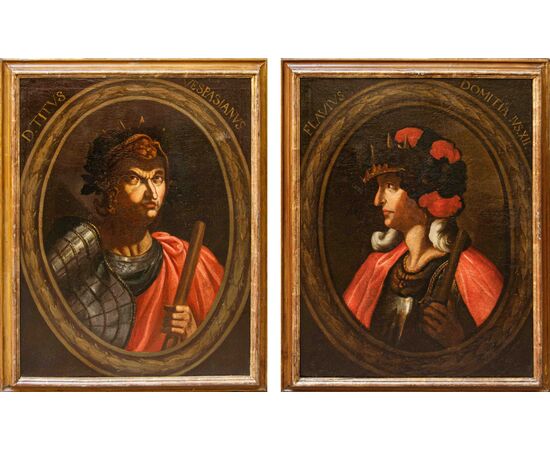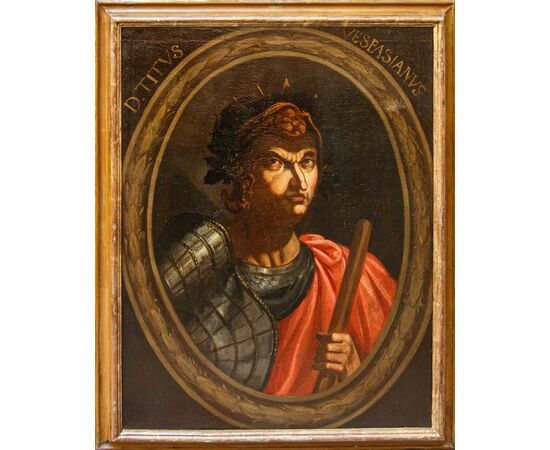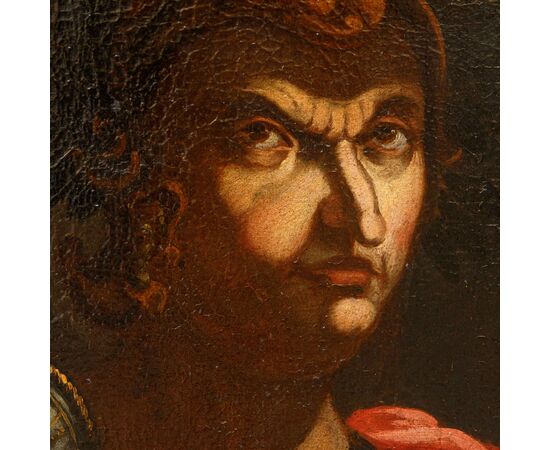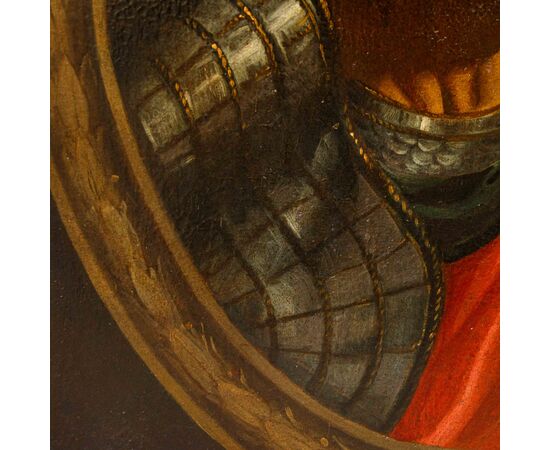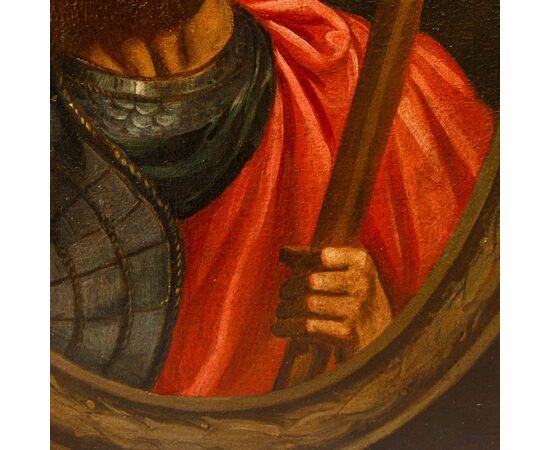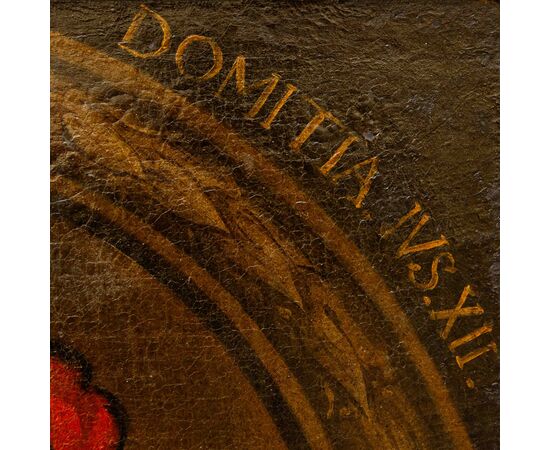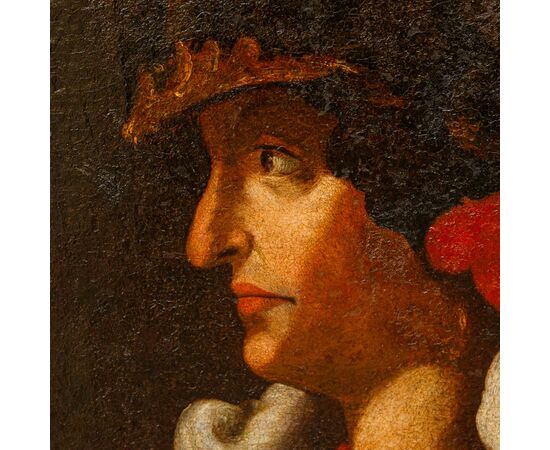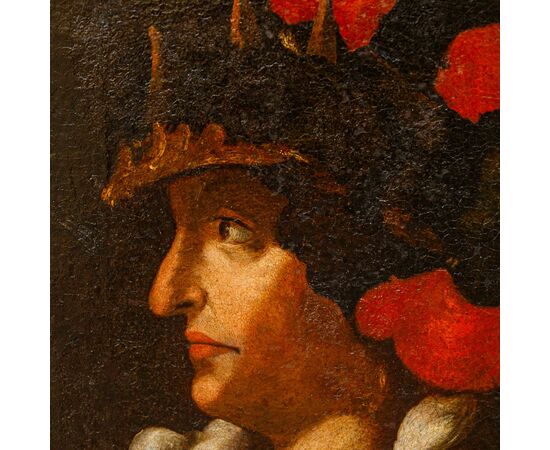17th century, Genoese School, Portraits of Roman emperors: Vespasian and Domitian
17th century, Genoese School
Portraits of Roman emperors: Vespasian and Domitian
(2) Oil on canvas, 96 x 72 cm
With frame, 107 x 83 cm
Inscriptions on the sides of the ovals:
D(ominus) TITVS VESPASIANVS
FLAVIVS DOMITIANVS.XII. (=twelfth in the series)
This pair of paintings depicts two emperors, Domitian and Vespasian, isolated in a trompe l'oeil oval frame. The noble and haughty scowl of the figures, expressively chiaroscuro in a bath of shadows, is expertly measured by the artist through the use of essential colors: from the bright red of the purple cloaks of command to the shadow of the armor, promptly sparkling in a self-referential celebration of power. The portraits are certainly inspired by, but do not conform to, the famous series of the Eleven Caesars by Titian. Made for Federico II Gonzaga, fifth Marquis of Mantua, the series found a natural destination in a room designed by Giulio Romano himself within the Ducal Palace of Mantua. Titian drew inspiration from the lives of the twelve Caesars by Suetonius, focused on the governmental parabola that went from Julius Caesar to Domitian, preferring, however, to start his sequence from Octavian Augustus, the second Suetonian Caesar. Extremely celebrated, the paintings were replicated on several occasions by Bernardino Campi, Giovanni Paolo Lomazzo and Annibale Carracci. Campi replaced Titian (1537-38) in the execution of the last Caesar, Domitian (1562). Sold by Vincenzo II Gonzaga to Charles I of England, the paintings then passed into the collections of the Spanish royals, being definitively lost in the fire of the Alcazar of Madrid.
The pair under examination reviews Vespasian and Domitian, that is, father and son. Roman general, Vespasian was emperor from 69 to 79. He was the fourth and last of the famous 'four emperors' and was therefore able to start the homonymous Flavian family dynasty. Vespasian sat in the consulate in the company of his son Titus, brother of Domitian. Like his father, Domitian began his ascent to government as an administrator; after having strengthened the military bureaucracy, he adopted, when emperor (81-96), a protectionist policy aimed at protecting wine producers and farmers, intending in this way to favor the prudent growth of grain reserves to avert famines.
The object is in good condition

